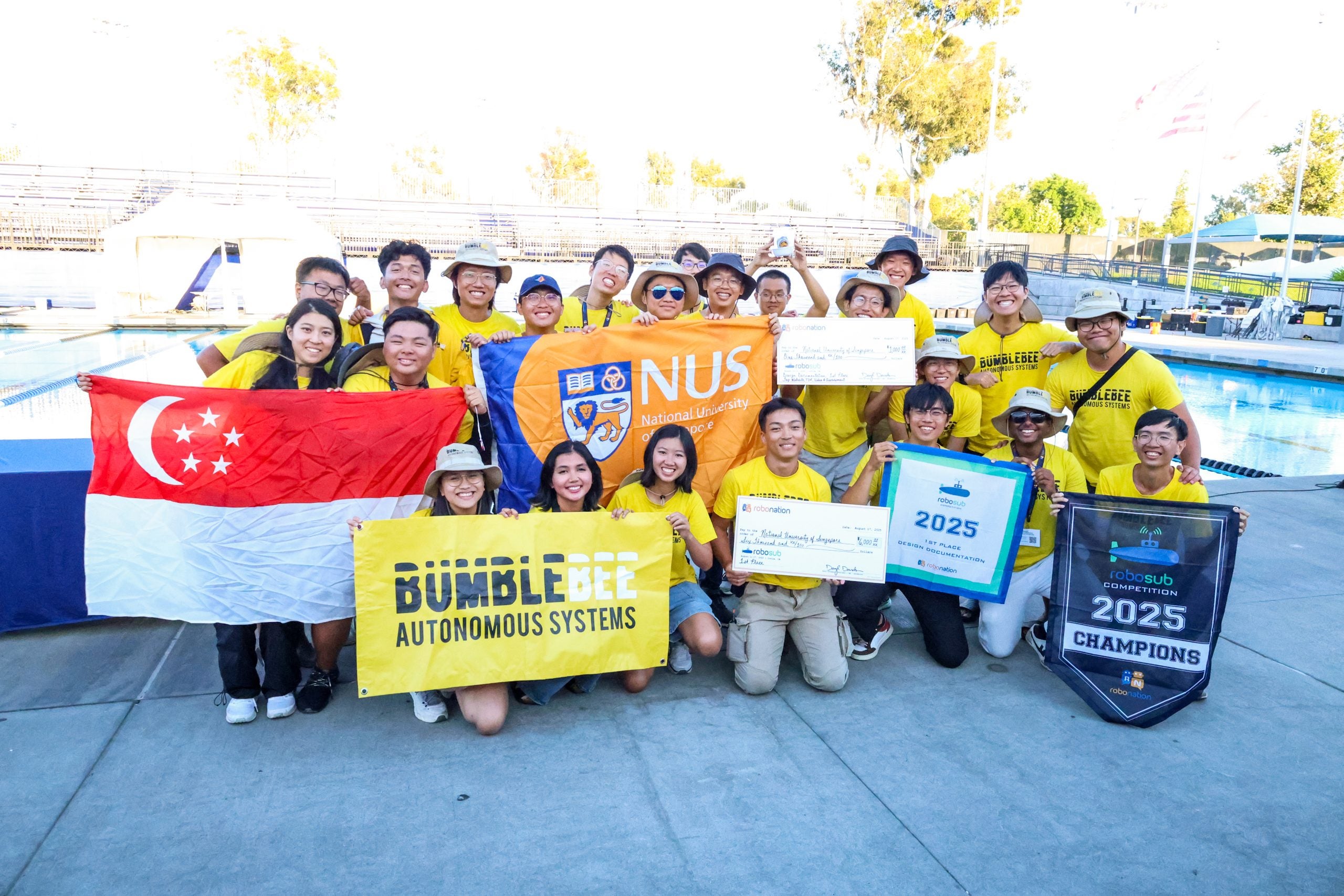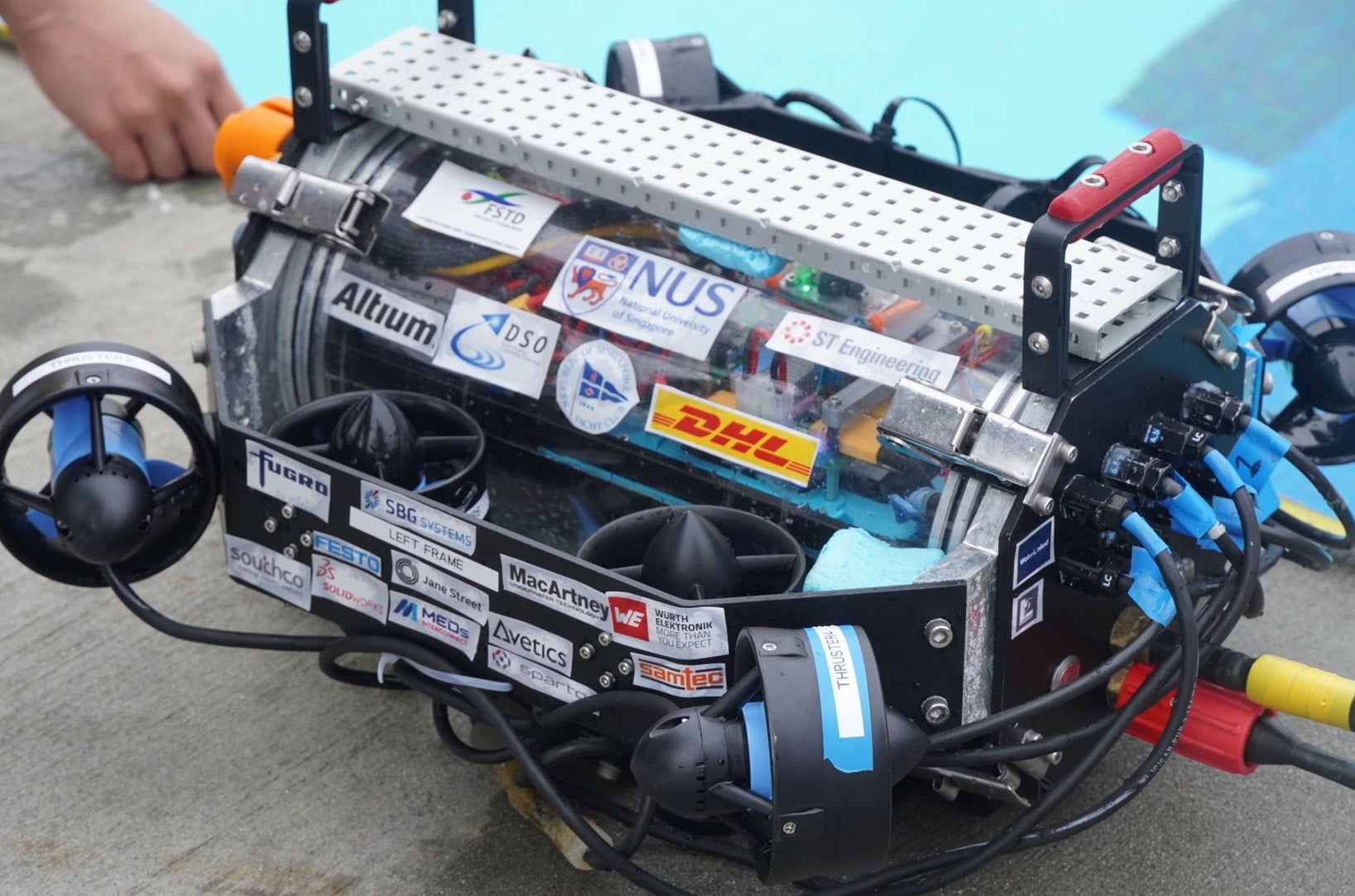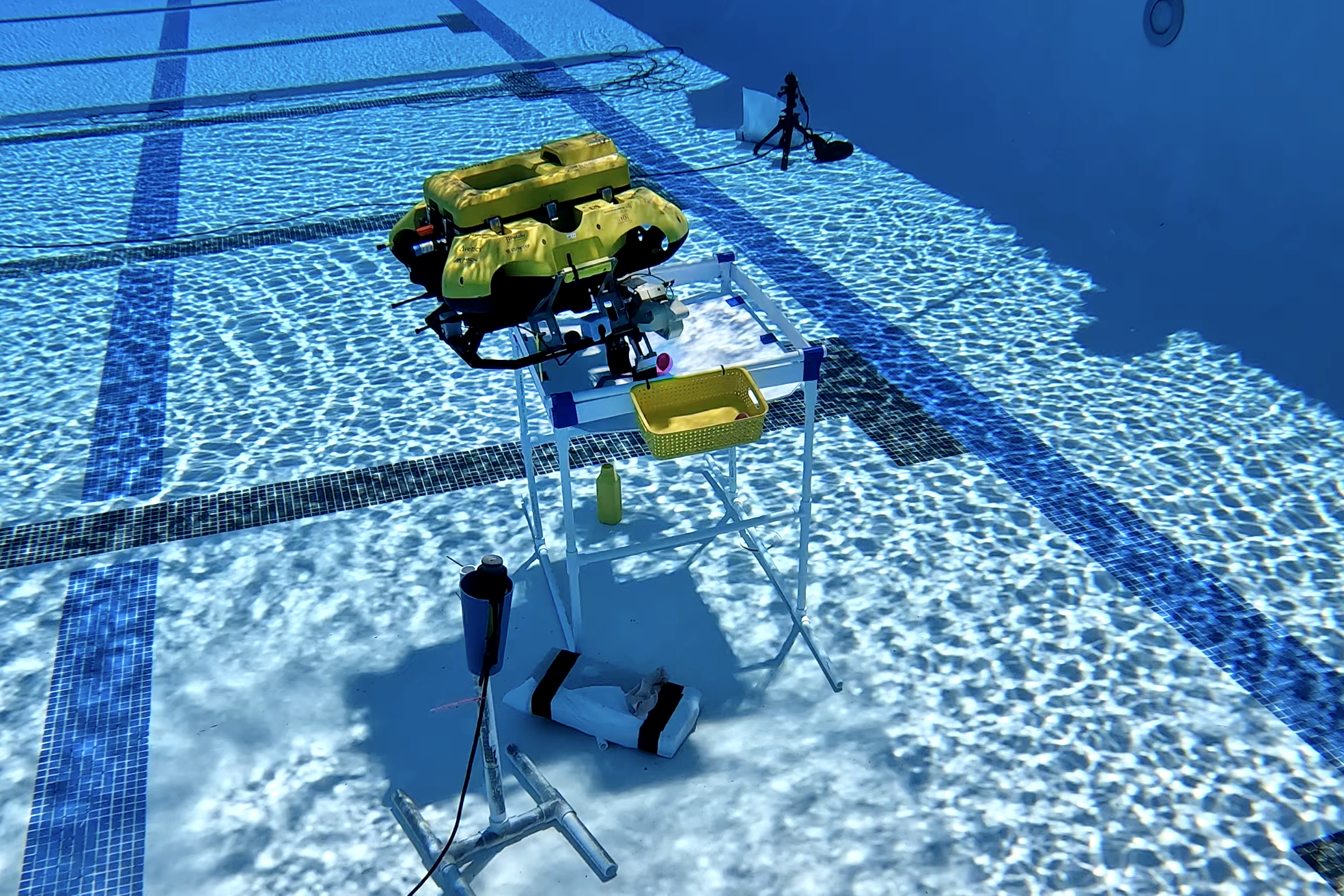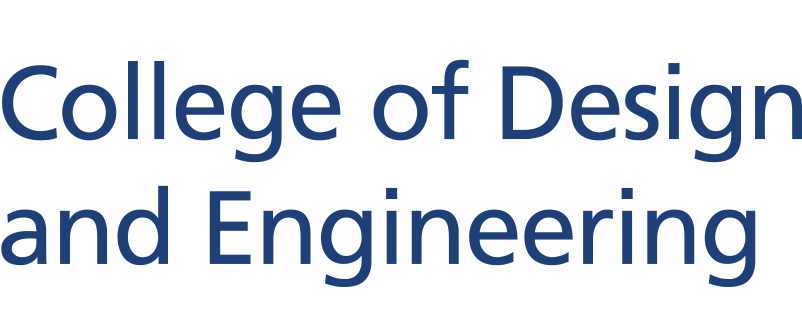
Team Bumblebee made their return to this year’s edition of the RoboSub competition and regained their title, clinching first place, beating out a record number of competitors. Robosub is an annual competition that challenges students to design, build, and compete with autonomous underwater vehicles (AUVs) in a series of tasks that challenge their engineering skills and problem-solving abilities. Each team’s AUV must complete complex missions simulating real-world underwater scenarios. This year’s RoboSub competition was held from 11-17 August 2025 in Irvine, California.
Following their victory in Robosub 2023, Team Bumblebee took a year off from the competition to focus on the RobotX competition for Autonomous Surface Vessels (ASVs) in 2024. This difficult decision proved to be the right one as they were able to focus on building their ASV and drone, clinching first place at RobotX 2024 in November last year.
No time to rest
Despite being fresh off their win, Team Bumblebee didn’t have much time to celebrate. With only 7-8 months to prepare for RoboSub, they had to start planning and designing for RoboSub 2025 soon after they got back from RobotX.
“Bumblebee’s flagship AUV was basically untouched for most of 2024 as the team had put all our focus into the ASV for RobotX. We had a long list of upgrades that were planned out, including hardware upgrades to make the system more modular and easier to maintain,” said Bumblebee Electrical Lead Irwin Kong (Year 4 Electrical Engineering).
These hardware upgrades, as well as a newly fabricated hull, took up most of the team’s time and effort for the first half of 2025. However, as May rolled around, a revelation dawned upon the team.
“As we scouted out our competition via social media, we noticed a lot of the teams were bringing a mini-AUV to try and score points in the inter-vehicular communication (IVC) section. We realised that we would need to bring a mini-AUV as well if we wanted to be competitive,” said Bumblebee Team Lead Leong Deng Jun (Year 4 Computer Engineering).
Despite the short lead time, the team made the bold decision to build a mini-AUV to accompany the flagship AUV for the competition. They tapped on the junior members of the team to assist in the design and construction of the mini-AUV. The team wasn’t confident in their ability to get the IVC up and running, but they realised the mini-AUV could help them score in the movement-based tasks, leaving their flagship AUV to focus on a much more important aspect of the competition.
A cutting edge
“We knew we had one advantage going into RoboSub that the other teams didn’t have. We were the only team that was confident in the AUV's capabilities to attempt the object identification and sorting task. The mini-AUV allowed us to free up the flagship AUV’s time during the competition run to attempt and complete the sorting task,” Deng Jun commented.

The object identification and sorting task made up almost 40% of the final points, which was why the Bumblebee team was so focused on maximising the points for that task. A significant amount of time and effort was spent training the models needed to complete the task.
But as the competition drew closer, the team was hit with a major setback. Just over a month before they were due to fly out to California, one of the main gyroscopes in the flagship AUV broke. This gyroscope helped the AUV gauge and measure distances when going about its tasks.
The team weighed their options, and after much deliberation and testing, they decided to move forward without a replacement gyroscope. Instead, they placed their trust in the existing Inertia Measurement Unit (IMU), focusing on training the AUV to operate without the gyroscope.
“It was a risk either way, but ultimately, we didn’t want to have the gyroscope failing on us again during the competition. We refocused our efforts on training the systems of the AUV to operate without the gyroscope, adjusting for any errors that might be caused by its absence,” remarked Bumblebee Software Lead Guk Yi Siong (Year 4 Computer Science).
Long days in California
The team made their way to California on 3 August 2025 and hit the ground running. Having found accommodations with a pool they could use, the team spent up to 16 hours a day testing. They often started their days as early as 6am, with testing at times stretching until as late as 10pm.
“The testing sessions were tough, but it was even tougher on those of us who had to be in the water during the testing. Of the 23 of us who made the trip to California, only four of us were confident in the pool. We had to make sure everyone, especially the swimmers, got adequate rest and weren’t overworked,” Deng Jun recalled.
Following an intense week of testing, the team finally set foot in the Woollett Aquatic Centre to put their AUVs up against the competing teams. Team Bumblebee had already pre-qualified prior to flying to California and were slotted straight into the semi-finals. But other challenges cropped up as they started testing in the competition pools.
“There was a massive red line in the pool that caused the AUV to detect it as a bucket for the object identification challenge, so we had to spend time re-training the AUV to avoid making the mistake,” Irwin recounted, recalling one of the main issues the team faced when they started testing.

The mini-AUV also had its fair share of issues, including hull integrity and balance problems. Team Bumblebee had their work cut out for them. “I have to give a big shout-out to the two junior members who flew out with us. Together with one of the senior software members, they took the lead for the mini-AUV and showed remarkable resilience to deal with the problems that cropped up,” said Deng Jun.
Collaboration in competition
This year’s RoboSub featured a record number of participants, which meant more competition for testing slots in the pool. But while the spirit of competition might be strong, the community spirit was even stronger.
“Instead of just trying to wrangle the slots for themselves, most teams would offer help or assistance in exchange for shared slots or more time in the pool. It was quite comforting to see how much collaboration and cooperation went on amongst the teams and speaks to the community that RoboNation has built,” Yi Siong reflected.
The semi-finals took place over two days, and Team Bumblebee came out as the top seed. This gave them the first pick in selecting the slot for their finals run. Commenting on the advantage, Yi Siong mentioned, “Getting first pick meant we could pick our ideal slot of 2pm. We wanted to avoid the noon sun as the light was causing us a lot of issues in the water, so going into the finals with our preferred slot was definitely a boost.”
The finals run
The 2pm timeslot was also the final slot of the competition. With all eyes on them, the pressure was squarely on all their shoulders to perform. They were confident heading into the run, but they had to maintain their focus. Having seen the other finalists score their runs, Bumblebee knew they had to replicate their semi-final runs in order to stand a chance of winning.
As their run started, things almost went horribly wrong. One of the team members noticed the measurements on one of the sensors were off. The team was alerted, and they quickly aborted the run. It turned out that one of the sensors hadn’t been reset after the previous test. Had they continued, the AUV would have gone off course during the run. The quick observation and reaction meant they could abort early and still have enough time to complete the tasks. Everything went smoothly after the restart, with both AUVs completing their tasks as expected.
When the results were announced, a sense of relief washed over the team. “We definitely felt more relief than excitement. All the hard work and stress finally paid off, and clinching first place made all the effort worth it,” Irwin recalled.
Congratulations once again to Team Bumblebee on their well-deserved success at RoboSub 2025! The team now looks forward to 2026. They aim to challenge in both the RoboSub and RobotX competitions next year, having laid the foundations for their ASV and AUVs over the past two years. Here’s wishing Team Bumblebee more success in 2026!
Team Bumblebee is a student competition team supported by the Engineering Design and Innovation Centre (EDIC) and the Advanced Robotics Centre (ARC).





